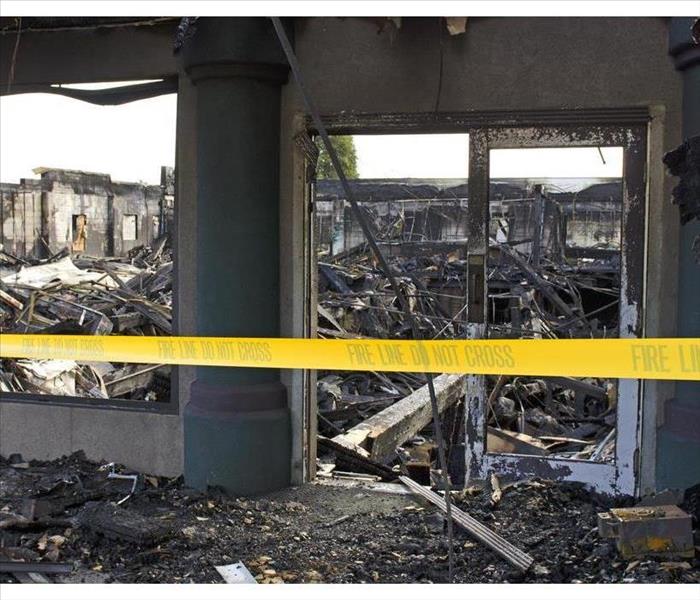What To Expect During the Fire Mitigation Process
4/26/2021 (Permalink)
Fire Mitigation Process
At first glance, a well-contained fire in your building in Wildwood Lake, TN, may seem like an easy thing to clean up. After all, a good fire suppression system and a reliable fire department can put it out pretty quickly. The process may involve more than you think, though. In addition to fire and smoke mitigation, fire restoration specialists also have to contend with water cleanup.
Water Damage
An inevitable stage of the fire cleanup process is the remediation of water damage. There are several ways your building can become saturated even when engulfed in flames:
- Broken pipes due to extreme heat
- Water sprinkler system release
- Blasts from the fire truck's hoses
Your walls, ceilings and floors are not only likely to be burned but they are probably also pretty drenched by the time the fire is finally out. If this damage is not dealt with in a timely manner, secondary issues such as mold growth can occur. Water cleanup is almost always a part of the fire restoration process.
Smoke Damage
Once all the materials that are destroyed beyond repair are torn out and the building is dry, an intense cleaning stage begins. Smoke cleanup is tricky because there are a lot of places that the vapors and the soot it carries can go that a simple wipe-down will not reach. It can even travel into areas of the building that were not affected by the flames themselves. A thermal fogger may be used to recreate some of the conditions that occurred during the fire so that the disinfectant can root out the smoke residue from all the cracks and crevices where it hides.
Even if only part of your building was burned, smoke and water cleanup add more steps to the fire mitigation process. A company that specializes in all these procedures is your best bet for total restoration.






 24/7 Emergency Service
24/7 Emergency Service
